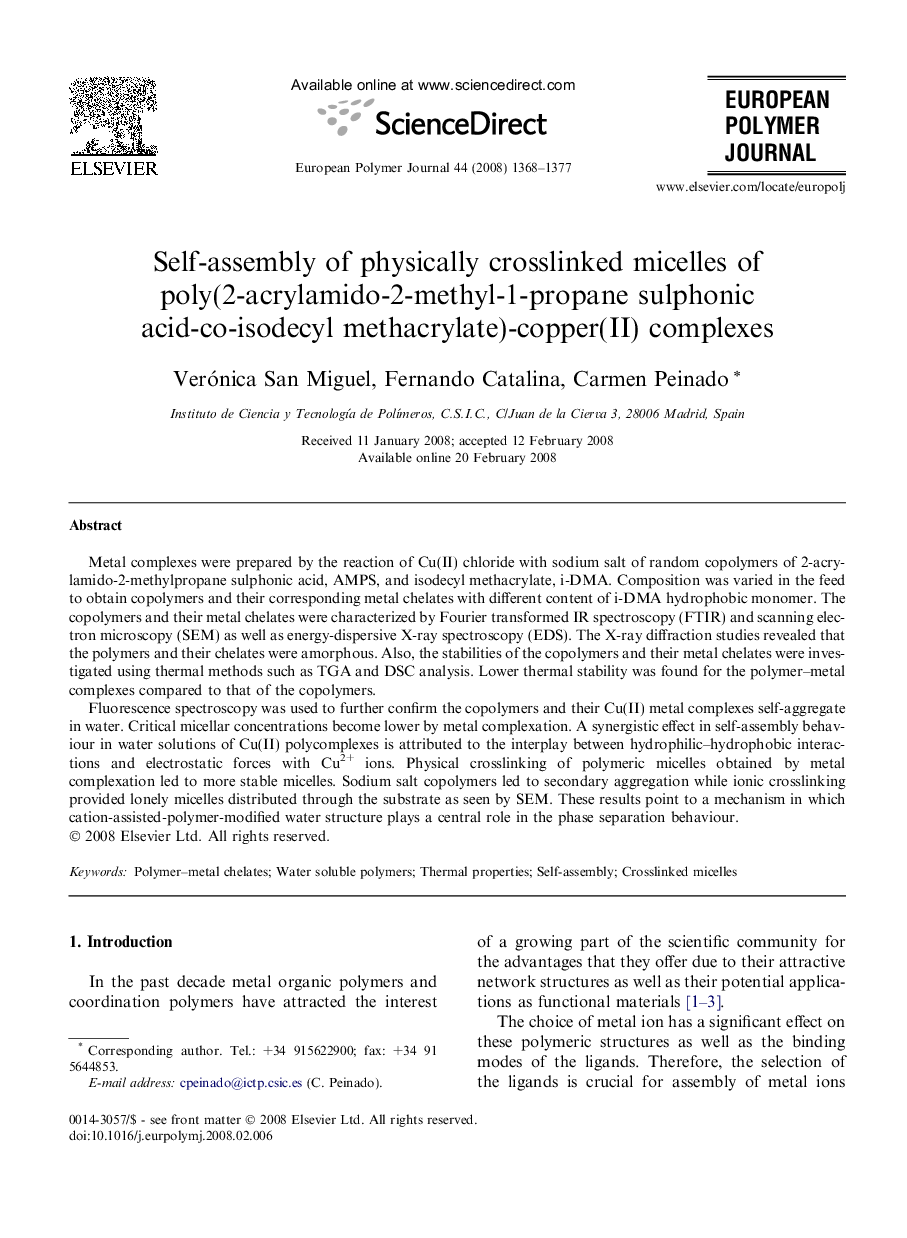| کد مقاله | کد نشریه | سال انتشار | مقاله انگلیسی | نسخه تمام متن |
|---|---|---|---|---|
| 1403113 | 984808 | 2008 | 10 صفحه PDF | دانلود رایگان |

Metal complexes were prepared by the reaction of Cu(II) chloride with sodium salt of random copolymers of 2-acrylamido-2-methylpropane sulphonic acid, AMPS, and isodecyl methacrylate, i-DMA. Composition was varied in the feed to obtain copolymers and their corresponding metal chelates with different content of i-DMA hydrophobic monomer. The copolymers and their metal chelates were characterized by Fourier transformed IR spectroscopy (FTIR) and scanning electron microscopy (SEM) as well as energy-dispersive X-ray spectroscopy (EDS). The X-ray diffraction studies revealed that the polymers and their chelates were amorphous. Also, the stabilities of the copolymers and their metal chelates were investigated using thermal methods such as TGA and DSC analysis. Lower thermal stability was found for the polymer–metal complexes compared to that of the copolymers.Fluorescence spectroscopy was used to further confirm the copolymers and their Cu(II) metal complexes self-aggregate in water. Critical micellar concentrations become lower by metal complexation. A synergistic effect in self-assembly behaviour in water solutions of Cu(II) polycomplexes is attributed to the interplay between hydrophilic–hydrophobic interactions and electrostatic forces with Cu2+ ions. Physical crosslinking of polymeric micelles obtained by metal complexation led to more stable micelles. Sodium salt copolymers led to secondary aggregation while ionic crosslinking provided lonely micelles distributed through the substrate as seen by SEM. These results point to a mechanism in which cation-assisted-polymer-modified water structure plays a central role in the phase separation behaviour.
Journal: European Polymer Journal - Volume 44, Issue 5, May 2008, Pages 1368–1377